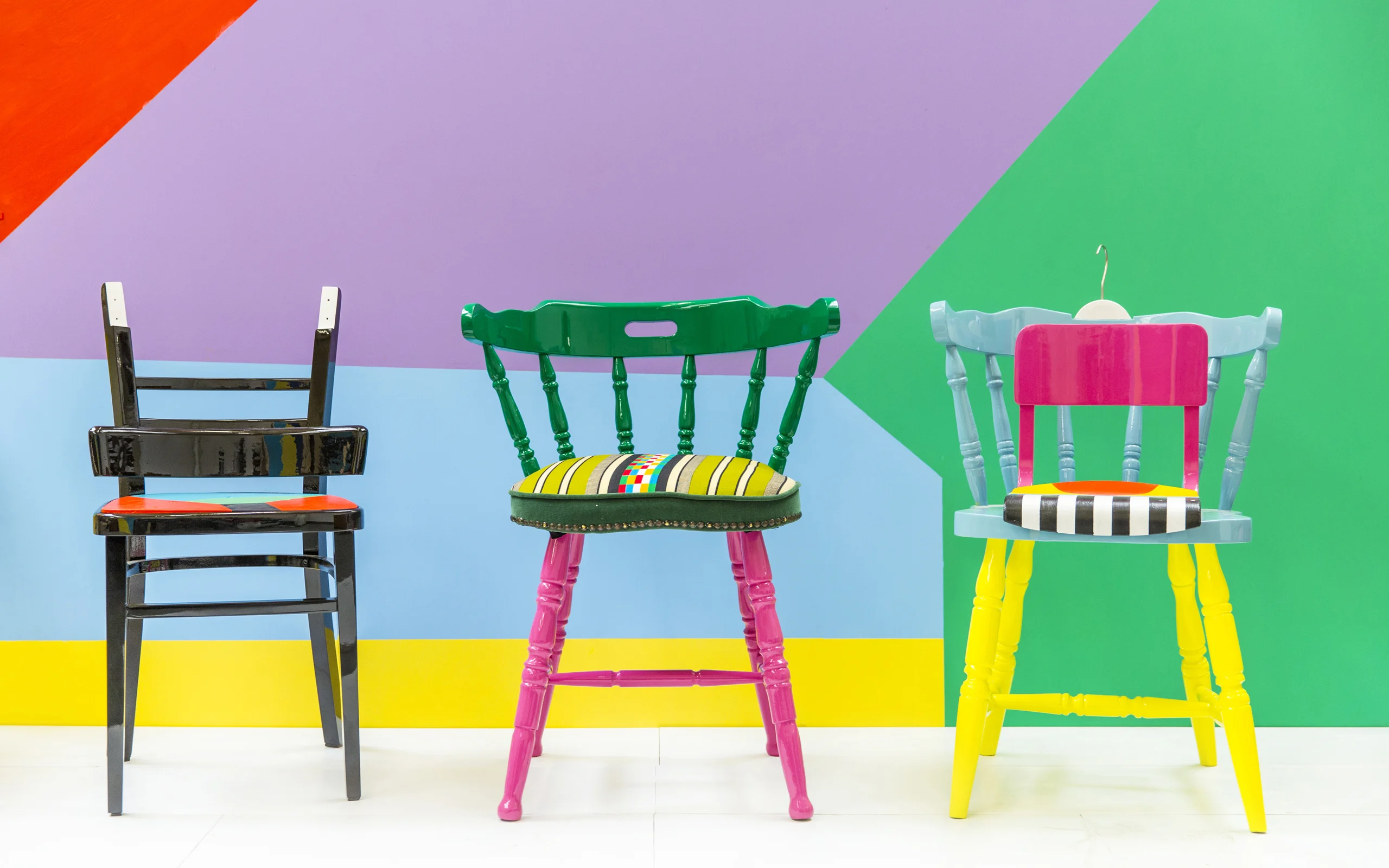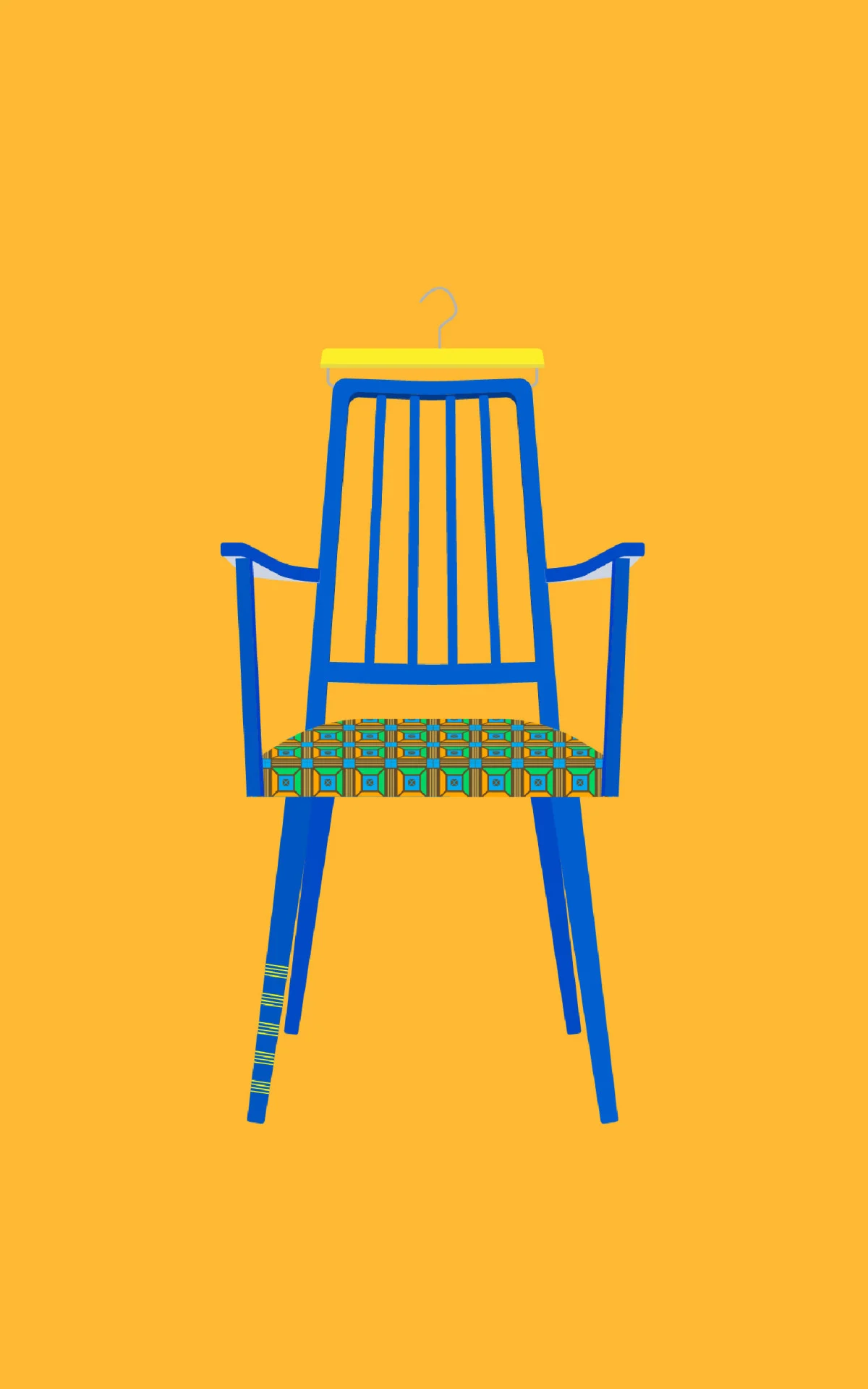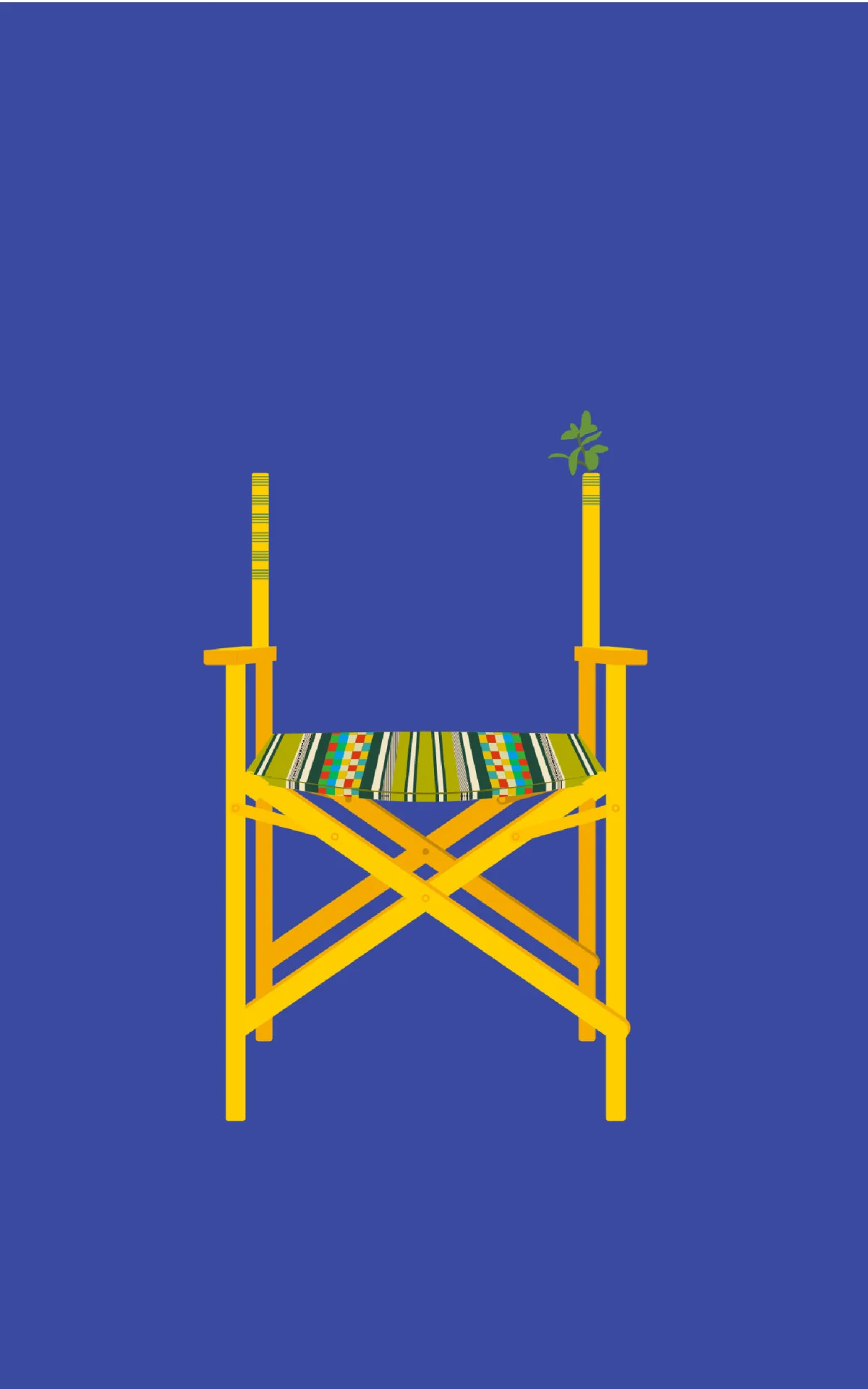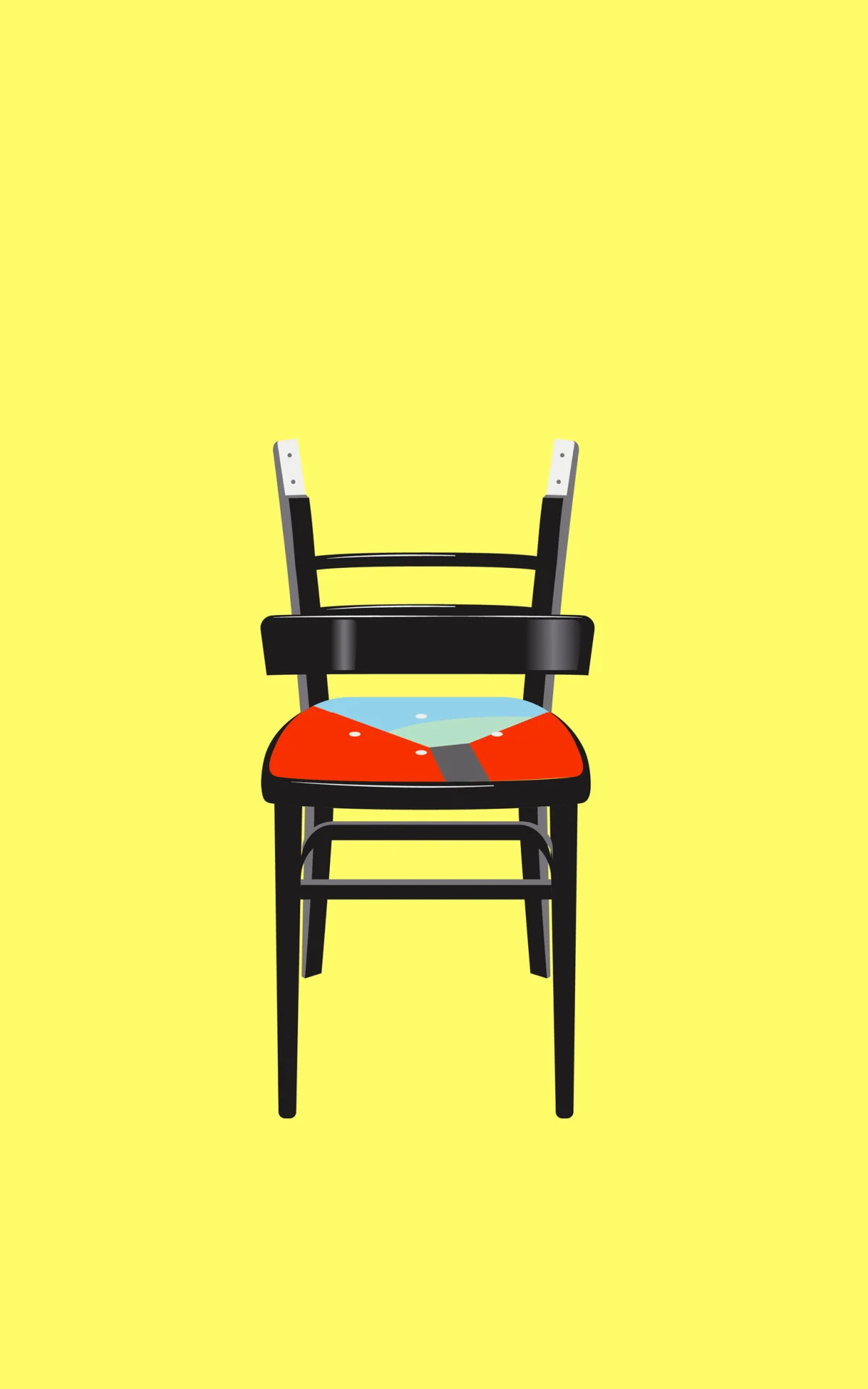

I remember those times visiting my grandparents and provocatively sitting down in my grandfather’s big, comfy favorite armchair. He’d always laugh and then try – always successfully – reclaim his seat, perfectly shaped to his body over time.
It is this sense of territorial routine that caught the interest of London-based artist Yinka Ilori, who we met at this year’s Design Indaba. “Chairs were very special and important in my family home. Everyone had their own chair they’d always sit in. Taking for example my sister’s chair would always give me a sense of guilt, as if I’d stolen it from her,” Yinka says.
And that’s how Yinka got interested in how people connect with chairs and furniture. He takes second hand and abandoned furniture from London’s streets and thrift shops and gives them a new life. This might involve adding colorful fabrics with vibrant patterns, raising the arms or shortening the legs.


Yinka bases the designs for his wonderful series If Chairs Could Talkon on his roots. “I’m really passionate about being African and also being British, so I want to incorporate both cultures in everything I do.
“My parents were born in Nigeria and they’ve lived here for over 30 years. I think a lot of people struggle with where they fit in terms of having two cultures. I always found it quite hard to distinguish the two, so I wanted to portray both styles.”
All Yinka’s designs are individual but they have one thing in common – they tell a story. Inspired by Nigerian parables that get passed down from generation to generation, he picks apart the keywords in these tales.
“So it might be about a giraffe with a long neck. I look at the word ‘giraffe’ and the word ‘neck’ or ‘long’, and then work out how I can integrate that key feature in my design. I don’t want to embody the whole of the narrative in that chair; I take a small part and make it the most impactful element,” he says.
Then he adds the hues and fabrics, which he describes as “having Sunday roast and then getting dessert. I love having dessert, so adding color and print is the dessert in my process.”

On closer inspection you discover that Yinka’s work is not always functional; some of his stools have features that make them impractical, like a missing leg or indelicately-placed hooks. But that doesn’t matter to the artist – it is more about how people want to use his designs, rather than how they should use them.
“When you buy a Basquiat painting for 50 million, the normal thing is to hang it on your wall. But if I bought a Basquiat painting and I wanted to lay it on my floor, I am allowed to do that. Because that’s just how it makes me feel.”
Yinka’s main goal is to make people happy. “When you look at a regular chair, you don’t always smile. My work is very colorful and has a narrative behind it. I also want people to sort of question the chair; why is it in this color? why does it have a weird looking leg ,or why isn’t it functional?
“I’m not a teacher, or a lecturer, I’m not Jesus, but I just hope people take away good energy and vibes from it. Hopefully it surprises and inspires people to do good things and to just be better people. That’s my message.”




